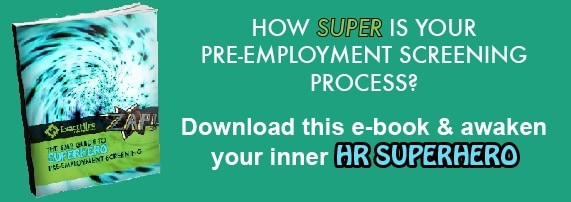Recruiting Software: Single-Source System vs. Stand-Alone ATS [VIDEO]
In this Q&A video, listen to ExactHire Co-Founder, Jeff Hallam, run through some common recruiting-related pros and cons when it comes to choosing between a single-source human resources software information system (HRIS) or a stand-alone ATS (applicant tracking system).
Video Transcript:
Hi, I’m Jeff Hallam and welcome to another edition of ExactHire Q&A. The topic today is whether an organization should purchase recruiting software as part of their overall payroll and HR solution; or, whether that’s something that they might be better served purchasing in a stand-alone environment. And the idea of our talk today is not to try to arrive at any conclusions or tell you what you should or shouldn’t do, but rather just to give you some guidance and some ideas to think through to help determine ultimately what might be the right solution for you and your organization.
So, let’s talk a little bit about the pros and cons for each. So, if you look at a solution that’s offered through a payroll and HR software provider, some of the pros would be things like the ability for information and the process to flow from one point to another…from the very beginning as an applicant…all the way into being an employee…and then ultimately as an ex-employee.
Certainly one of the strong selling points in solutions like these is also the notion of integration. Once I’ve hired someone that core information can flow forward into payroll, and I as an HR professional nor anyone else on my team has to worry about re-keying that information.
And then likewise having a single provider for all things, holds a lot of appeal for people. And so that is certainly a list of some of the main drivers that might lead people to lean toward purchasing this as part of that overall payroll and HR software deliverable.
Some of the cons, likewise, include items like how much of a priority is recruiting software in that provider’s development queue? Is it getting the time, attention and dollars that you’d like so that it’s going to keep up with emerging trends out there in the industry.
What does the price point look like? Is it more, is it less…and are you contractually obligated to stay with that solution as part of the overall solution for any minimum period of time?
And then finally, features and functionality. It’s not uncommon for this to be not necessarily the strength of most payroll and HR tools. So that’s certainly something to look at…will it have the features and the capabilities that you’re looking for and that your group would need?
Now let’s look at stand-alone recruiting software. So, the pros for that are that typically those types of solutions should have very good features and functionality. They should be something that, because that’s all they’re doing, it should have those types of things.
Secondly, there often times are add-on tools…other things that you can do as spokes off of that, that may not exist in that single-source solution that we were talking about a moment ago. Things like video interviewing, automated reference checking, onboarding solutions, integrated background checks and things of that nature.
And then hopefully, dependent upon the provider that you’re dealing with, there should be better expertise to help with technical questions that would come up. That group should be a little more on the leading edge of what’s going on out there and what’s emerging in the industry, as opposed to somebody where this is part of their overall solution.
The cons to the stand-alone solution are…of course, out of the box, it probably is not going to integrate with your existing payroll and HR solution.
You do now have a separate vendor to go to for support-related questions as opposed to a single vendor in that consolidated environment.
And then dependent on the provider, there are some applicant tracking or recruiting software providers out there that do have contractual obligations. So once you sign up to use that, you are required to use it for a certain period of time. And that’s kind of a common con to be aware of in either scenario…just make sure that you understand what that looks like so that if it’s not doing for you what you’d like you have an opportunity to consider other options without being bound to that one provider longer than you might care to.
So, here’s a quick list of five questions to ask yourself as it relates to what might be best for you, and which of these scenarios might apply. So the first one would be to look at the overall priorities of your organization, and for your position. How important overall is recruiting? If it’s a minimal activity, and it’s not happening very often…that probably points you one direction versus another.
Secondly, how much hiring will your organization do over the next year or so? How much volume is going to be done might tie in with the priorities, and it might also tie into the next question…which is what data exactly are we talking about when that integration piece is discussed? So once I’ve hired someone, what exactly from the applicant tracking side of things will then port over into payroll? Make sure you understand what that is and make sure you understand how important it is and how much of it there is.
Looking at price, is there a price differential between the two…that’s certainly something that merits consideration.
And then finally, some of those add-on tools that we talked about with the stand-alone recruiting options…how appealing are those to you? Do you ever see yourself needing those?
As I said earlier, none of this is designed to say you should go one way or the other…it’s like so many other things with software…there is no pat answer that’s going to be consistent for everyone. Rather, it’s just something that is designed to help you from your end, have a little bit more objective way to sit down and look at the pros and cons of each, and ultimately determine, what is it that’s ultimately going to be right for your company.
This has been another edition of Q&A, thank you for joining us!




